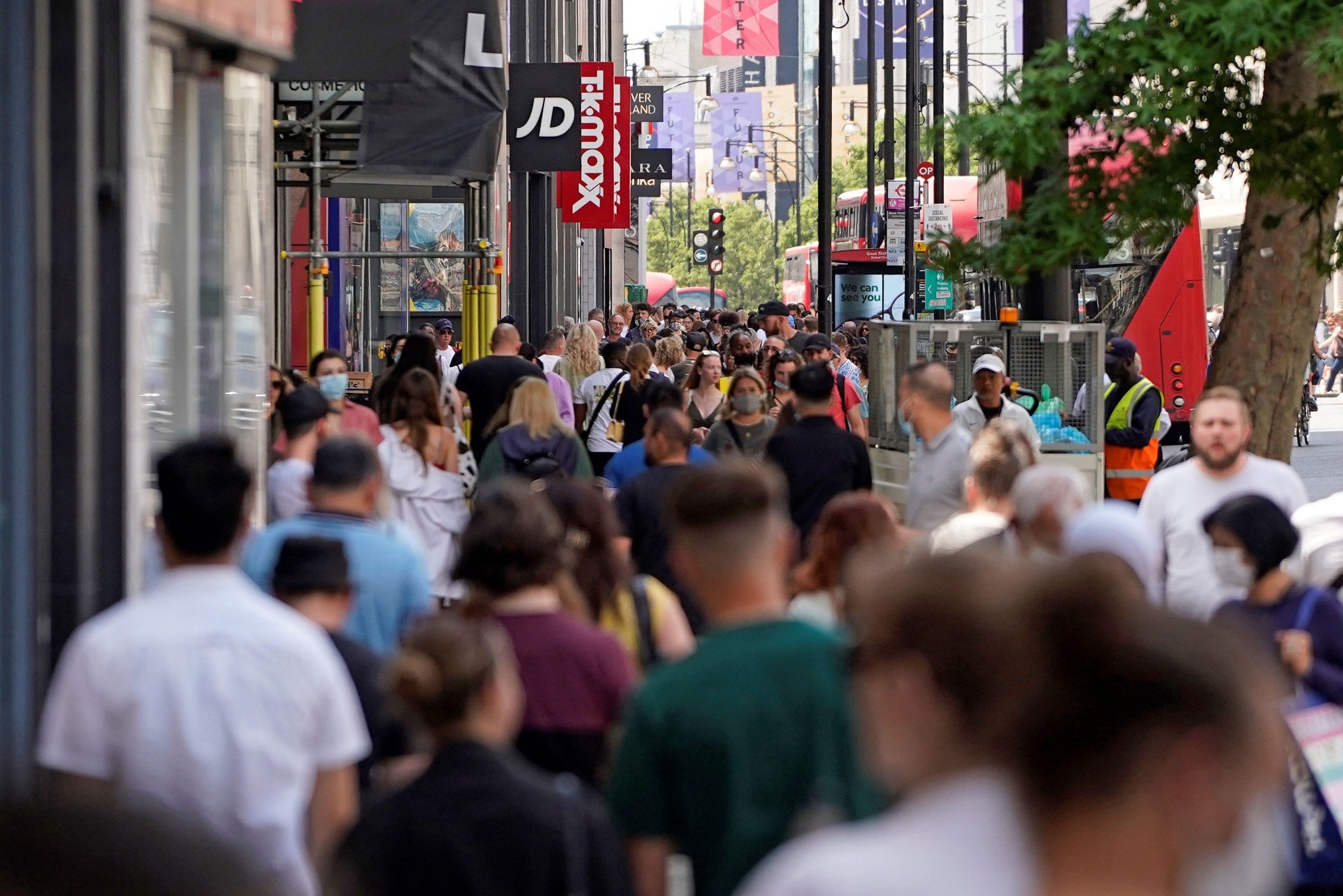Loan defaults drop below pre-pandemic levels
But fears remain for one in 10 at risk of new financial hardship as support ends

Your support helps us to tell the story
From reproductive rights to climate change to Big Tech, The Independent is on the ground when the story is developing. Whether it's investigating the financials of Elon Musk's pro-Trump PAC or producing our latest documentary, 'The A Word', which shines a light on the American women fighting for reproductive rights, we know how important it is to parse out the facts from the messaging.
At such a critical moment in US history, we need reporters on the ground. Your donation allows us to keep sending journalists to speak to both sides of the story.
The Independent is trusted by Americans across the entire political spectrum. And unlike many other quality news outlets, we choose not to lock Americans out of our reporting and analysis with paywalls. We believe quality journalism should be available to everyone, paid for by those who can afford it.
Your support makes all the difference.Borrowers have successfully avoided the pandemic debt storm, experts have proclaimed, as the last of the emergency forbearance measures close.
But evidence of a last-minute spike in payment breaks, seen exclusively by The Independent, has stoked fears of a new affordability crisis rising beneath the upbeat headlines.
As the final deadline for Covid-related payment “holidays” passes, it is clear that, as a nation, the unprecedented financial packages released as the pandemic took hold here in the UK last spring, particularly widespread payment holidays, were an effective forbearance measure.
Introduced by the Financial Conduct Authority in March 2020, those struggling to make loan repayments were given the option to defer payments for up to six months. As a result, the UK avoided the spike in loan defaults that were expected at the start of the pandemic.
According to the latest data from credit reference agency Equifax, the proportion of mortgages with static balances – in other words with no payments being made against them – peaked at 18 per cent in June 2020 and is now back to pre-pandemic levels of just over 4 per cent.
Despite bleak forecasts at the start of the pandemic, the proportion of loans in arrears are actually now lower than they were in 2019. In June 2021, “buy now pay later” and mail order sectors had seen fewer accounts with three or more missed payments, while second mortgages and hire purchases have seen a slight rise in defaults.
Across the country, the trends have broadly followed the same pattern of improvement, with Wales, Scotland and the northeast seeing rates fall below the national average. Geographically, London was the only region of the UK to see a significant increase in arrears.
Equifax data also shows an encouraging picture of financial vulnerability. Following most economic shocks, a 6-10 per cent increase in the number of people in financially difficult situations is expected.
And yet the number of people with multiple severe long-term financial issues in the UK has actually decreased since the start of the pandemic, by around 2 per cent.
“As the economy re-opens and many of the pandemic’s emergency support measures are phased out, it’s important we recognise how successful they have been in protecting the financially vulnerable in the UK,” says Paul Heywood, chief data and analytics officer at Equifax UK.
The macroeconomic data is encouraging too. Last week the International Monetary Fund (IMF) upgraded its economic forecast for the UK to predict a 7 per cent rise in GDP over the course of 2021.
But that would still leave the economy smaller than it was pre-pandemic, chancellor Rishi Sunak has warned.
And with rapid growth come the risks associated with inflation. The National Institute of Economic and Social Research (NIESR) believes inflation could hit 3.9 per cent by early 2022 – almost double the Bank of England’s target.
A rise in the cost of living will only compound the personal financial challenges of those already concerned about making ends meet as the transition out of emergency measures continues.
The number of unsecured loans with static balances hit a pandemic high of 10 per cent in March this year – twelve months after the first lockdown was announced – and overtaking peaks of 8.5 per cent in July 2020 and 7.7 per cent January 2021.
This demand has been partly driven by the FCA’s 31 March deadline, after which the scheme was closed to new applicants, but still suggests one in ten UK borrowers are worried about making repayments.
“There are still a few warning lights on the dashboard,” Heywood acknowledged. “And the spike in borrowers requesting payment holidays is a sign that we are not out of the woods yet.”
“Financial concerns remain prevalent for most households – 50 per cent of Britons are not confident that they will be able to cover basic living expenses, such as bills and mortgage repayments, until the end of 2021,” Denise Ko Genovese, senior personal finance editor for price comparison site Nerdwallet, warns.
“But the industry is not turning its back on Britons,” she adds.
“Banks and lenders have already pledged that they will continue to help those who find themselves in financial difficulty due to Covid on a case-by-case basis. Likewise, some organisations such as UK Finance have promised to offer free tailored support and assistance to those in need.
“The key for individuals will be to remain calm and inform their lender or bank as soon as they find themselves struggling to keep up with mortgage payments. The earlier they do this – in addition to seeking assistance and advice where necessary – the sooner they will be able to gain access to all the available support mechanisms and regain control of their finances.”
Join our commenting forum
Join thought-provoking conversations, follow other Independent readers and see their replies
Comments